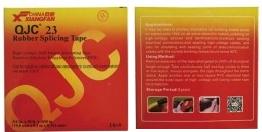The Versatility of Waterproof Rubber Strips A Comprehensive Guide
When it comes to protecting your home or any space from unwanted water intrusion, waterproof rubber strips are among the most effective solutions available. Their versatility and durability make them an ideal choice for a variety of applications, from household repairs to industrial uses. This article explores the different aspects of waterproof rubber strips, their applications, and why they are an essential component in many contexts.
What Are Waterproof Rubber Strips?
Waterproof rubber strips are flexible, resilient strips made from synthetic or natural rubber that is designed to prevent water from penetrating areas where it's not wanted. They come in various sizes and designs, allowing for easy installation on doors, windows, or any potential leak points. Their ability to create a tight seal makes them invaluable for maintaining dry interiors, especially in regions prone to heavy rainfall.
Key Features and Benefits
1. Water Resistance
As their name suggests, the primary benefit of waterproof rubber strips is their ability to resist water. They can withstand prolonged exposure to moisture without degrading, making them suitable for both indoor and outdoor applications. This property is critical in preventing water damage, which can cause mold growth and structural deterioration.
2. Durability
Made from high-quality rubber, these strips can endure extreme weather conditions, including UV exposure, heat, and cold. This durability ensures a long lifespan, offering a cost-effective solution over time without the need for frequent replacements.
3. Flexibility
Waterproof rubber strips are highly flexible, allowing them to conform to various surfaces and shapes. This flexibility is particularly useful for uneven or irregular surfaces, ensuring a snug fit that enhances water resistance.
4. Easy Installation
waterproof rubber strip

Most waterproof rubber strips are designed for easy installation, often requiring little more than adhesive or simple mechanical fastening. Whether you are a DIY enthusiast or a professional contractor, you can install these strips quickly and effectively.
Applications of Waterproof Rubber Strips
1. Home Improvement
Homeowners frequently use waterproof rubber strips for sealing doors and windows. By preventing water from seeping in, these strips protect interiors from damage and enhance energy efficiency by blocking drafts.
2. Automotive Use
In vehicles, waterproof rubber strips are essential for sealing doors, windows, and trunks. They not only prevent water intrusion but also contribute to reducing cabin noise and managing temperature.
3. Industrial Applications
In industrial settings, waterproof rubber strips are used in machinery, storage units, and transport containers to safeguard sensitive materials from moisture. Their durability and resistance to various chemicals also make them suitable for demanding environments.
4. Marine Applications
For boats and marine equipment, waterproof rubber strips are vital for ensuring that hulls remain watertight. These strips help maintain buoyancy and prevent water from entering cabins and storage spaces, thereby ensuring the safety of the vessel and its passengers.
Conclusion
Waterproof rubber strips represent a practical yet often overlooked solution for preventing water damage across a wide range of applications. Its water-resistant properties, durability, flexibility, and ease of installation make them an essential component in both residential and industrial contexts. Whether you are sealing windows in your home, upgrading your vehicle, or maintaining equipment in a factory, waterproof rubber strips offer a reliable means of protection. Investing in high-quality waterproof rubber strips can save you time, money, and hassle, allowing you to focus on what truly matters. Consider incorporating these versatile strips into your next project and experience the benefits for yourself.
-
XIANGFAN Rubber Tape-Ultimate Solutions for All Your Insulation NeedsNewsJun.24,2025
-
XIANGFAN Rubber Tape-Protection for Industrial and Residential ApplicationsNewsJun.24,2025
-
XIANGFAN Rubber Tape: Superior Safety and Sealing for Demanding EnvironmentsNewsJun.24,2025
-
XIANGFAN Rubber Tape: Reliable Solutions for Every Electrical ChallengeNewsJun.24,2025
-
XIANGFAN Electrical & Industrial Tape: Powering Reliability Across IndustriesNewsJun.24,2025
-
XIANGFAN Electrical & Industrial Tape: Excellence in Every ApplicationNewsJun.24,2025
